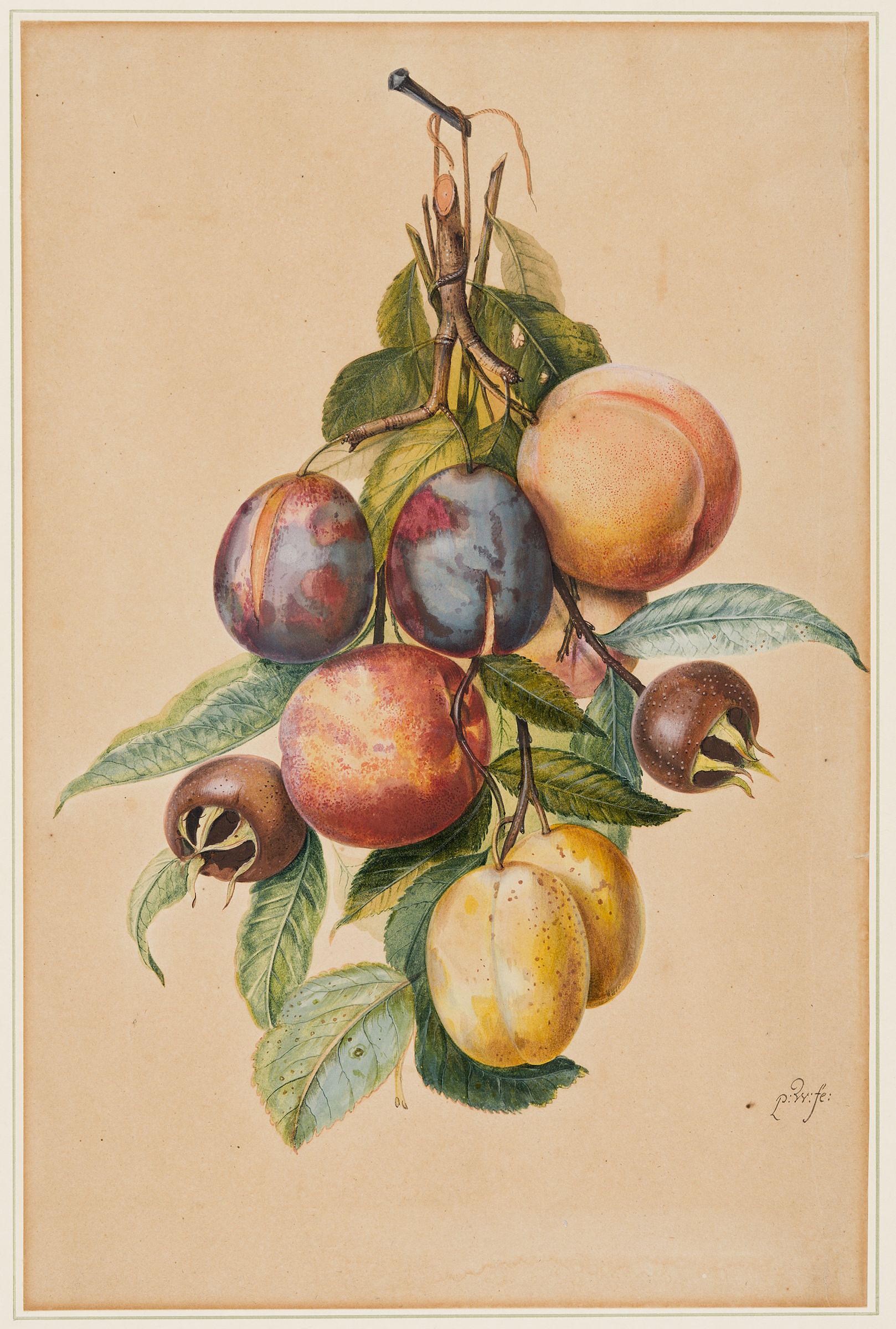Bletting

Pieter Withoos: Still Life with Plums, White Plums, Peaches and Medlars (17th century)
" … maturing into final form."
Some fruits require aging beyond their tree to become edible: quince, persimmon, and medlar most prominent among these. Each proves too astringent without further curing, the medlar famous for needing to age right to the edge of rotten before it attains its highly-prized and unique flavor. This curing process, called Bletting, historically occurred in some cool, dark place on straw to cushion the curing fruit. Bletting delays the usual essentially instantaneous fruit-consuming process. Typically, fruit's fate has been immediate consumption once spotted, stored for only very short periods, or preserved, for it usually features a remarkably short shelf life. Some portion of the fruit I purchase ends up in the compost bin because I can't quite keep up with it. It's living while actively dying, and I often lose track of where it’s going until after it's already gone.
The medlar, praised since Roman times, seems especially ancient, for it might need six or even more weeks of Bletting before it comes into its own for consumption, which often involves making a jam or sauce to enhance other flavors, especially wine. Any modern would likely lose track of anything aging for so long in one of the cooler corners of the basement, so medlar's neither prized nor very present in our modern instantaneous society. It's old fashioned as well as fashioned by age. While preparing my stories for Publishing, I realize they have been Bletting, waiting for some state beyond mere ripeness to emerge. I realize that I am accomplishing something more or different than simply packaging these stories. It seems more like I'm harvesting then preserving them. I might be making a jam.
Posting these stories daily, I almost always feel focused on telling my story to my current audience. Preparing collections of these stories feels more like playing for posterity in the same way that canning fruit feels different than preparing that night's supper. Both processes transform raw into something more refined, but the actual consumer seems much further from my mind in the case of preservation for later. Canning's a performance before a future audience, one which the preparer can never feel confident if he will even be present for the performance. The author prepares to be present in absentia. He suddenly discovers that he's writing for the ages as his audience.
It's breathtaking to catch myself touching eternity. When reviewed within this broader context, my stories take on different textures and meanings. What once stood as individual incidents come to discover inter-relations. A plotline, never originally embedded, naturally emerges. The significance seems somehow expanded, too. What was once simply hand-to-mouth fruit aged into a richer component. Each story no longer appears to stand alone but benefits from the influences only broader contexts ever provide. What first seemed like repetitive sameness, just so much cutting, pasting, and picky editing, took on a whole other texture once I realized that my work had been Bletting. It seems unrecognizable now. I catch myself wondering whether I wrote this. It seems so much different with color, texture, and flavor aged within a whit of turning rotten.
The painstaking processes Publishing entails guarantees that some Bletting occurs. Publishing's never instantaneous, and probably shouldn't be, regardless of what the Publishing On Demand industry insists. If work's to appear between covers, it should be properly vetted as well as Bletted to ensure that it's worthy of taking up precious shelf space. The daily blog posting should properly slip into, then almost immediately back out of, focus. It lives the life of an orange, its delight compressed into a finite few minutes. The compendium stretched further. It influences more than just the moment it inhabits. Its impact extends further, even into The Ages. It became something different while sitting on that straw in the further back corner of the larder. It was not just idling there but maturing into final form.
©2023 by David A. Schmaltz - all rights reserved


